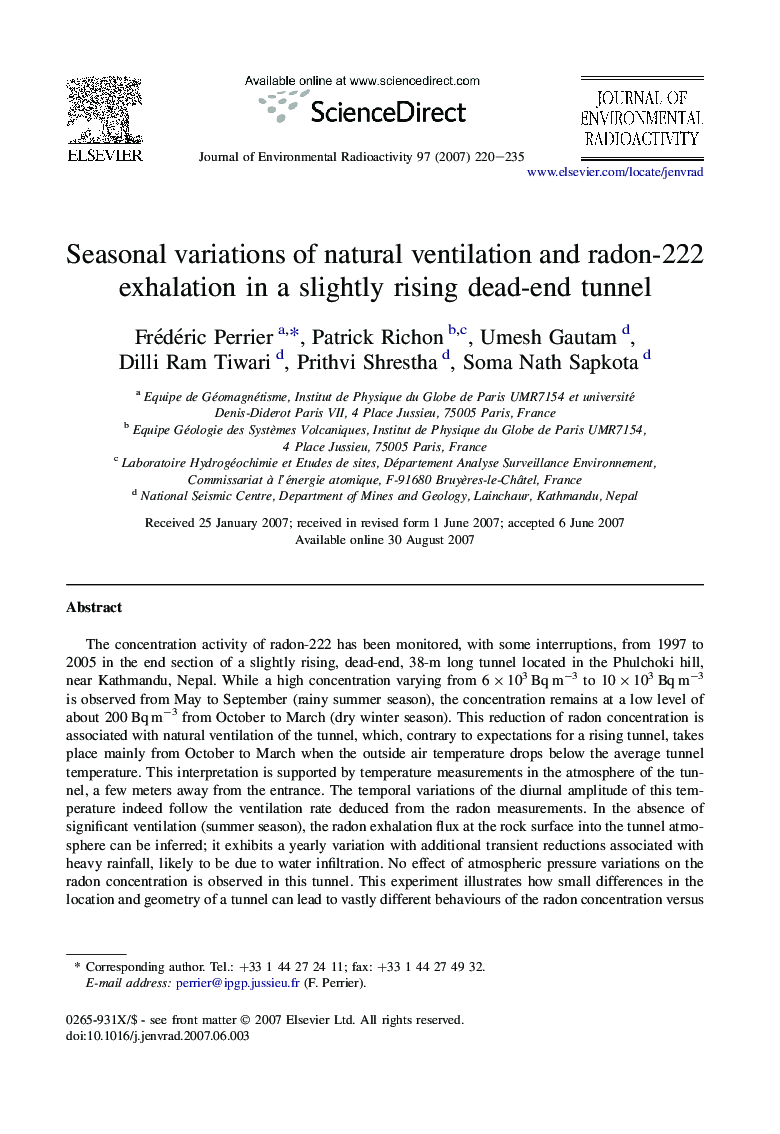| Article ID | Journal | Published Year | Pages | File Type |
|---|---|---|---|---|
| 1739263 | Journal of Environmental Radioactivity | 2007 | 16 Pages |
The concentration activity of radon-222 has been monitored, with some interruptions, from 1997 to 2005 in the end section of a slightly rising, dead-end, 38-m long tunnel located in the Phulchoki hill, near Kathmandu, Nepal. While a high concentration varying from 6 × 103 Bq m−3 to 10 × 103 Bq m−3 is observed from May to September (rainy summer season), the concentration remains at a low level of about 200 Bq m−3 from October to March (dry winter season). This reduction of radon concentration is associated with natural ventilation of the tunnel, which, contrary to expectations for a rising tunnel, takes place mainly from October to March when the outside air temperature drops below the average tunnel temperature. This interpretation is supported by temperature measurements in the atmosphere of the tunnel, a few meters away from the entrance. The temporal variations of the diurnal amplitude of this temperature indeed follow the ventilation rate deduced from the radon measurements. In the absence of significant ventilation (summer season), the radon exhalation flux at the rock surface into the tunnel atmosphere can be inferred; it exhibits a yearly variation with additional transient reductions associated with heavy rainfall, likely to be due to water infiltration. No effect of atmospheric pressure variations on the radon concentration is observed in this tunnel. This experiment illustrates how small differences in the location and geometry of a tunnel can lead to vastly different behaviours of the radon concentration versus time. This observation has consequences for the estimation of the dose rate and the practicability of radon monitoring for tectonic purposes in underground environments.
